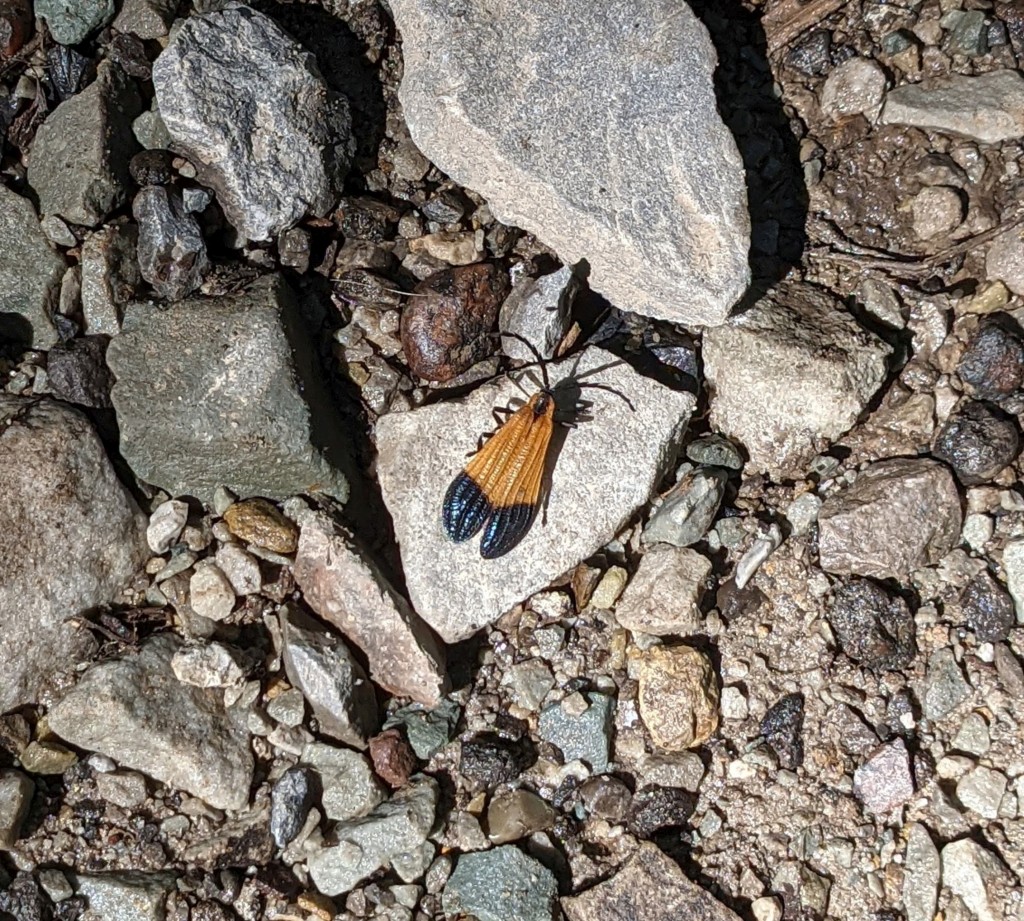
14 September 2021
This bug attracted my attention as it fluttered by so slowly that I thought it was a moth.
When it landed I could see its body shape and antennae were wrong for a moth. Moths usually have feathery antennae like this …
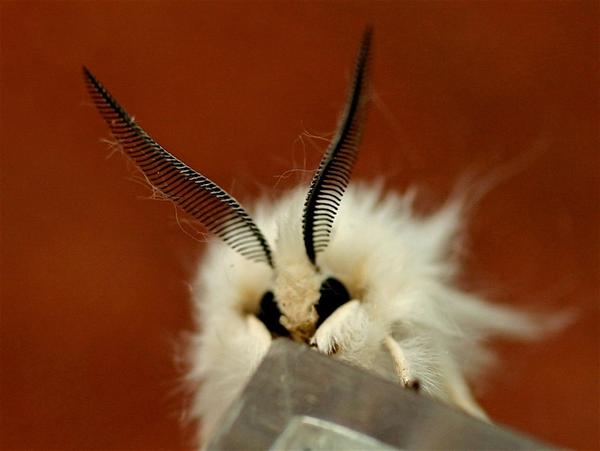
… whereas this bug has segmented antennae, as seen in this photo from Wikimedia Commons.
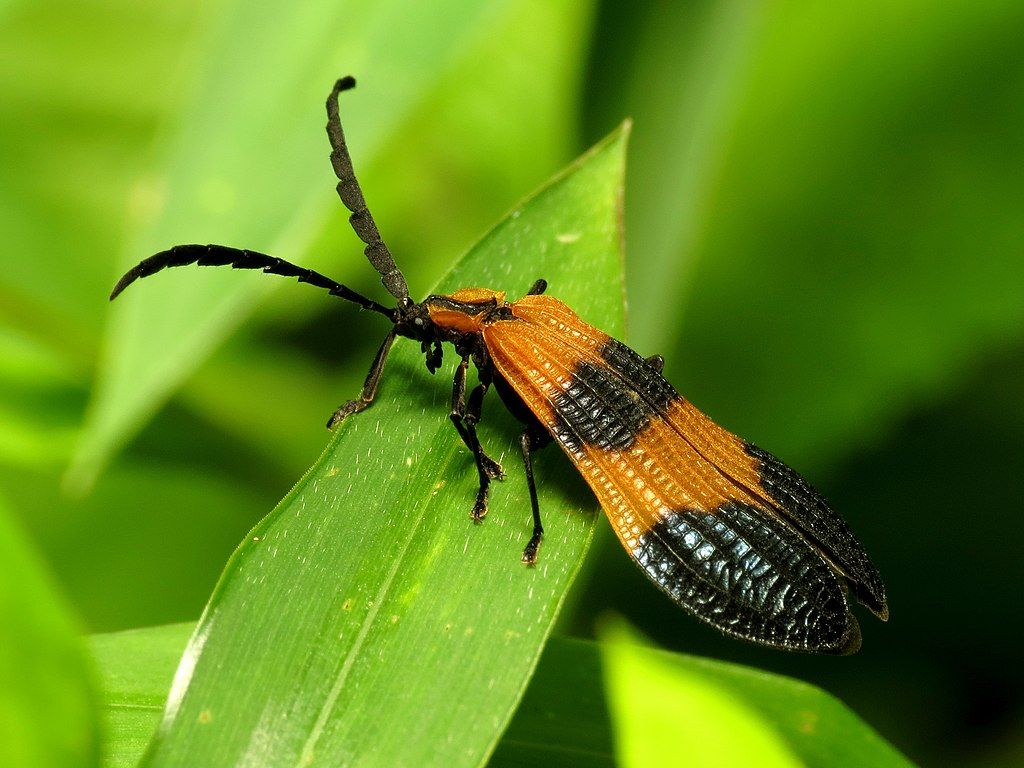
iNaturalist told me it was an “end band net-wing beetle (Calopteron terminale).” The black tip on the elytra (wing coverings) is the “end band.” The large and membranous “net-wings” are covered when the beetle is at rest. Click here to see him with open wings.
In flight I thought he was a moth because “This beetle is a strong, but slow, lumbering flier,” according to North American Insects and Spiders.
Check the antennae to narrow the possibilities. On beetles they can be whimsical.
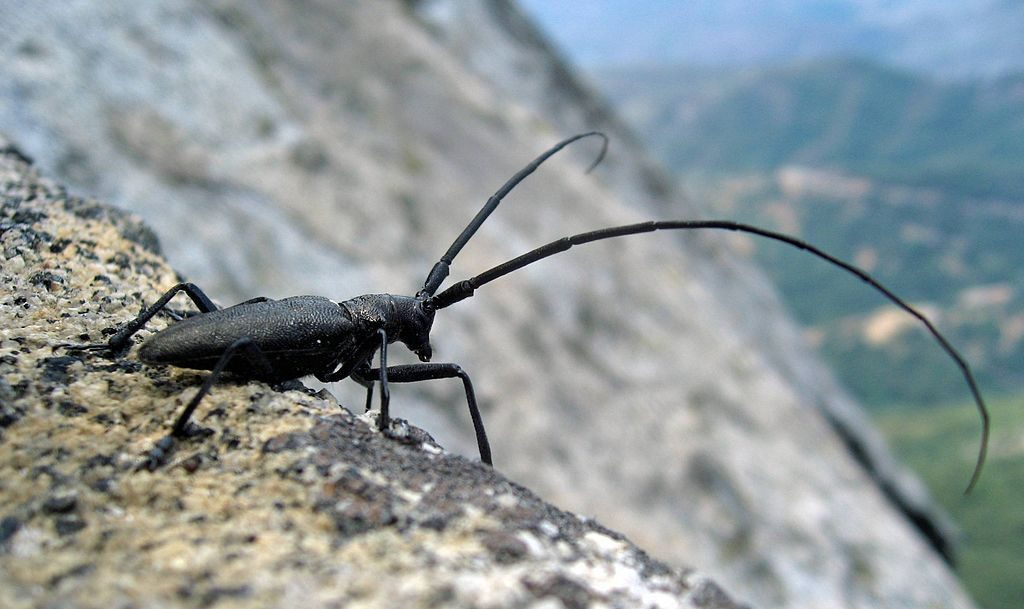
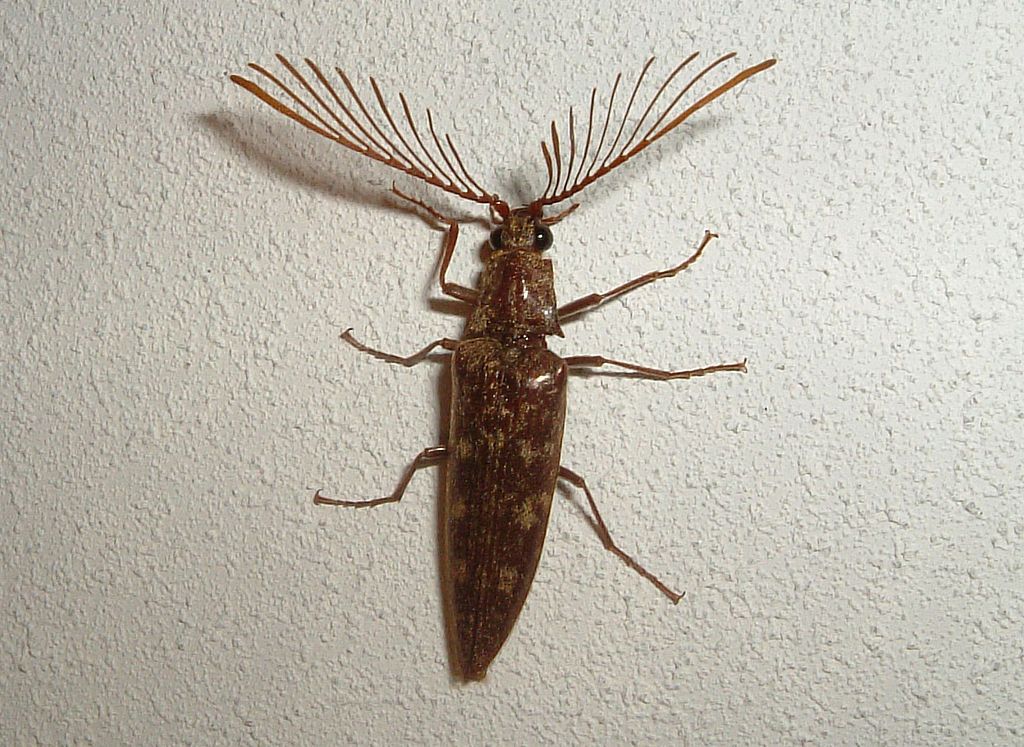
(photos from Kate St. John, Chuck Tague and Wikimedia Commons)